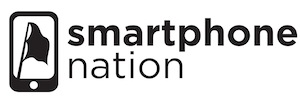Gone are the days of fanny packs and burlap sacks overflowing with lengthy cables, expensive gadgets and the need for a watchful eye. Converged technology is reaching a point where devices are becoming smaller yet more powerful, consumption friendly and are an all around joy to use. Leave the MP3 player at home, skip lugging around your digital camera and quit moving your GPS from car to car. The pocket friendly smartphone has stepped up to take on those responsibilities.
The Smartphone rolls your favourite devices into one. No other device comes close to the tech-meld that phone manufacturers have been pursuing and seem to have finally attained.
So, if all these phones feature GPS, WiFi, bluetooth, intelligent syncing, instant push e-mail, music players with large capacity and cameras, how do you pick one? Let’s take a look some of the more popular offerings.
Firstly, the Apple iPhone. Entering the game a little late, the iPhone came touting a large screen with touch capabilities, a fluid and consistent user interface and it quickly become a smartphone for the masses. But with power comes responsibility, and Apple failed to delivery many features that were available on phones half a decade old, they alleviated some of the flak by having a large centralized location to get third party applications from, and boy there sure are a lot. The marketing and brand name power pushed them through the hard spot of forcing users to comply with the proprietary and draconian ways of Apple products. If you’re looking for a device that has a large spacious screen, a smooth and easy to understand interface and is thin and easy to pocket – look no further than the iPhone as a great entertainment device.
Getting down to business, next up is the Blackberry. A device that initially came out for business users with reliable messaging in mind…is still out for business users who have reliable messaging in mind. Combining a QWERTY keyboard with a platform built around rock-solid e-mail and world-wide messaging, a Blackberry is an excellent way to stay in touch with any and everybody. While RIM has been making strides in hardware and software evolution, many regular consumers who have switched to Blackberries for their stability and battery life are also noticing some of the drawbacks to a device that was aimed at business and corporate users. Memory leaks, lack of large internal storage capacities and limited customization are some sticklers that are being re-worked. But if business and personal communication with first class reliability is your desire, a Blackberry is very suitable.
This leaves us with a few other platforms that can do the above tasks and much more. One being Windows Mobile. With numerous form factors, Windows Mobile has become the de-facto standard for hardware manufacturers to slap on their devices to enter the smartphone market. Whether it’s powering a large touch screened phone with a hidden slide-out keyboard or a small clamshell/flip phone, Windows Mobile brings smartphone computing to your style…whatever it may be. Full corporate e-mail support, a plethora of third party applications – with ones dating back to the PocketPC days, and more customization than a person can handle, Windows Mobile brings the power of a desktop to your hand. Unfortunately it also brings the registry which becomes cluttered very quickly, stability issues that require soft reboots to fix, and battery life that leaves much to be desired. Having said that, if personalization and self-expression are your thing, if you like gadgets that look harmless but pack a wallop in power and potential, Windows Mobile is calling your name.
The next platform may not be well known in North America, but people all over Europe have been swooning over the S60 smartphone operating system for quite some time. Series 60 is the iteration of Symbian, offered by Nokia. Being a jack of all trades, it brings the battery life of Blackberry, the power and application potential of Windows Mobile, and the audio/video creation and consumption of the iPhone into one device. With a breach of 2 device streams, the N and E series, Nokia has created a set of phones with 2 different markets in mind. The E series, aimed at the business user, integrates tight quality control creating a physically solid device, large capacity batteries and extremely thin devices into phones that are very classy and quiet yet hold their own when compared to others. The N series pack large megapixel cameras with highly sensitive optics, large screens for viewing video and pictures, and dedicated keys for quick media access into phones that can be used for capturing, sharing and creating memories. Anytime. Anywhere.
However, with a user interface that some dread using, a round-about security model and real lack of innovation over the years, Nokia has put S60 to rest in favour of a new Symbian OS. If you’re looking for a respectable yet non-flashy, down-to-earth device with a platform that is tried, tested and true and top-notch for media and communication, take a gander at a Nokia S60 device for your needs.
Stay tuned for Part 2 of the Smartphone War with contenders WebOS, Android and Maemo. These platforms have already shaken up the industry by bringing open source and endless potential to anybody who owns one. Running the Linux kernel beneath a windowing environment, they allow developers to break free of the proprietary shackles that bound them and work only with the limits of their imagination.
In the mean time, if you could have any OS on your favourite hardware, what would you pick?
Leave your thoughts in the comments section below!



